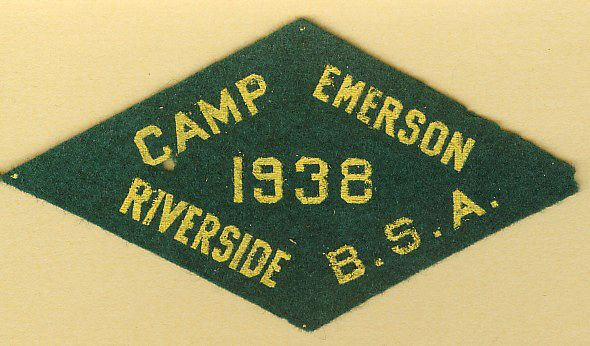1929 – 1937
Scout Executive C.K. Radford was tragically killed while teaching flying to a student pilot from March Field. Radford had been a US Army Reserve Pilot for 10 years, was based at March Field, and flew all of the army training biplanes of the day (PT-38, Douglas-02, WWI Liberties). He and his student spun into the San Bernardino Mountains from 4000′ in 1929 when the student froze at the controls. Scout Executive John H. Leecing took over as leader of RC Council. he has been an executive in the Santa Barbara Council.
In 1929, Dr. Paul Simonds and nine scouts of T-13, Riverside, used Camp Emerson as the staging area before going to the Third International Scout Jamboree held in Birkenhead, England. An American Indian dance team has been a sensation at the first International Jamboree in London in 1920. Therefore, T-13 practiced their Cahuilla Indian medicine man’s fire dance and captured the attention of everyone who saw them pick live coals out of the fire, pop them into their mouths and blow them out in a red arc. In a personal note dated 1963, Charles (Bert) Grayson M.D. said:
“At a conclave of tribes held at 12th & Main, Riverside, the Cahuilla taught us to pick up a small enough piece to be juggled into the mouth. By blowing out, sparks would fly out and the glowing coals could be seen through the dancers’ cheeks. The important thing to remember was that the coal must be kept moving in the hands and in the mouth to prevent burns. We rented Indian wigs for the dance in England.”
The Scouts were Eagle Scout Charles Grayson (later became a radiologist), Eagle Scout Andy Hamilton, Eagle Scout Joe Hunter (who during World War II invented the technique of extruding, or continuous casting of aluminum, and established world-famous Hunter Engineering Company. He was a major organizer and contributor to RC Council (Silver Beaver 1958), Eagle Scout Rod Leap, Eagle Scout Kelly Townsend, Elmer Kemp, Bailey Shepard (who burned his throat during a fire-dance practice at camp), Louis Stevenson, and Kendall Whitehead.
Johnny Verbeck was a humorous song at most campfires as well as at other camps. Its author is unknown.
= Johnny Verbeck =
1. Above to the store in Idyllwild there lived a mean old man,
His name was Mr. Johnny Verbeck and he could surely plan.
His place was filled with cats and dogs and ringtailed rats a few,
So Johnny Verbeck he planned a machine to grind them into stew
Chorus:
Oh, Mr. Johnny Verbeck how could you be so mean,
You surely will be sorry for inventing that machine;
For all the neighbor cats and dogs will never more be seen,
They’ll all be ground to sausages in Johnny Verbeck’s machine;
2. One day a boy came walking, he walked into the store,
He bought a pound of sausages and placed them on the floor,
The boy began to whistle, he whistled up a tune,
And all the little sausages went dancing round the room,
Chorus:
3. One day the darned thing busted, the blamed thing wouldn’t go,
so Johnny Verbeck he climbed inside to see what made it so;
His wife she had a nightmare awalking in her sleep,
She gave that crank a HECK of a yank and Johnny Verbeck was meat.
Chorus
Many summers had outstanding buglers on the staff. During the 1920’s, Dr. Paul SImonds blew all the calls from reveille, to chow, to taps. As G. Albert Mills, Scout Executive the summer of 1922 remembered at a Riverside County Historical Society meeting in 1961, “It was Doc Simonds’ peculiarity that he wanted to blow the bugle when he was in camp.” During the 1930’s, Vincent Shank (T-34) was an accomplished bugler and alternated with Eagle Scouts of T-13, Tom Hawkins, and Jackson Ingham Jr. Shank remembered that in a Camp Emerson bugling contest, held between Ingham and him, that Ingham won a new bugle and he received a case, Shank later spent 35 years playing a trumpet on the strip in Las Vegas.
Often campfires would close with Scouts singing the first verse of Taps, and then reciting the Scout Benediction. After the boys were in bed the bugler played Taps, which would echo through the camp. This sequence gave everyone a lasting feeling of reverence.
= Taps +
Day is done, gone the sun,
from the lake, from the hill,
from the sky,
All is well, safely rest, God is night.
= Scout Benedition =
The Twelfth Scout Law is Reverent,
May the Great Scoutmaster of all good Scouts,
be with us until we meet again.
Summer camp totals were reported as follows: 1928: 64 Scouts, 1929: 142 Scouts, 1930: 231 Scouts, 1931: 250 Scouts. A two-week session cost $7.00 each.
